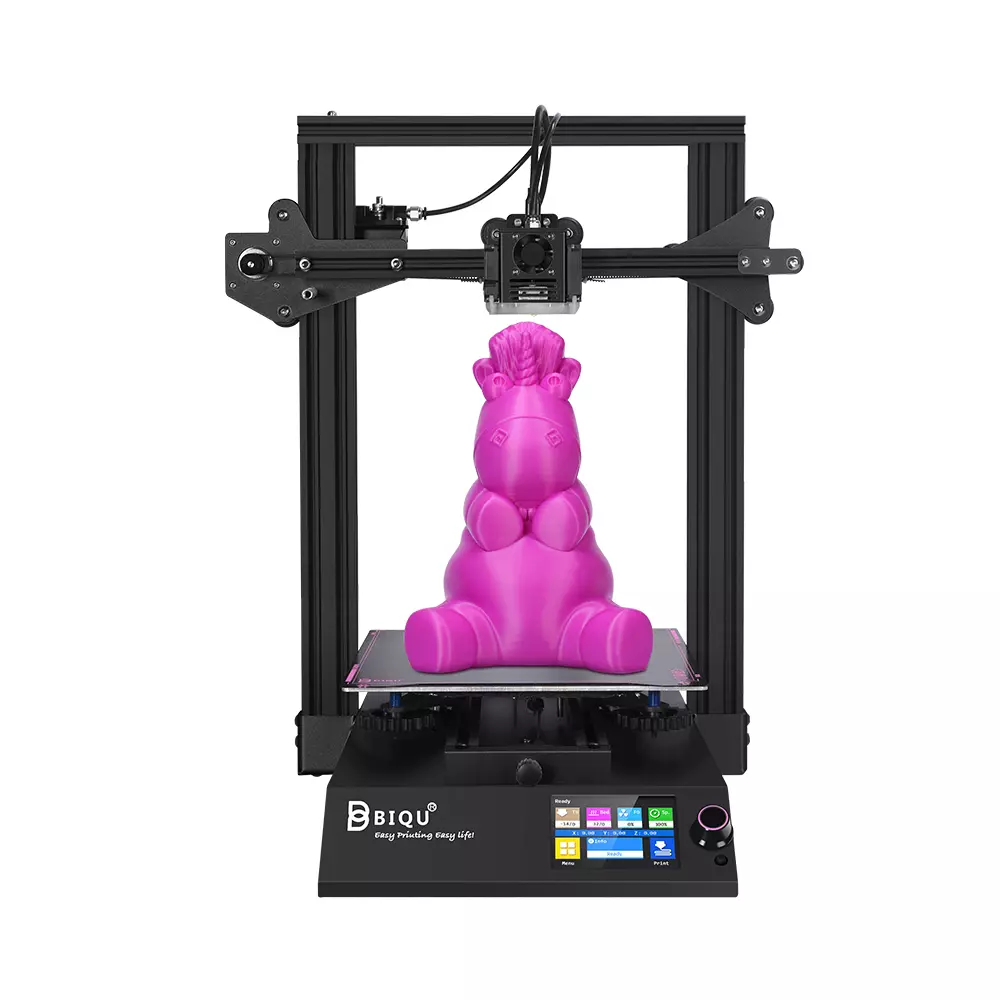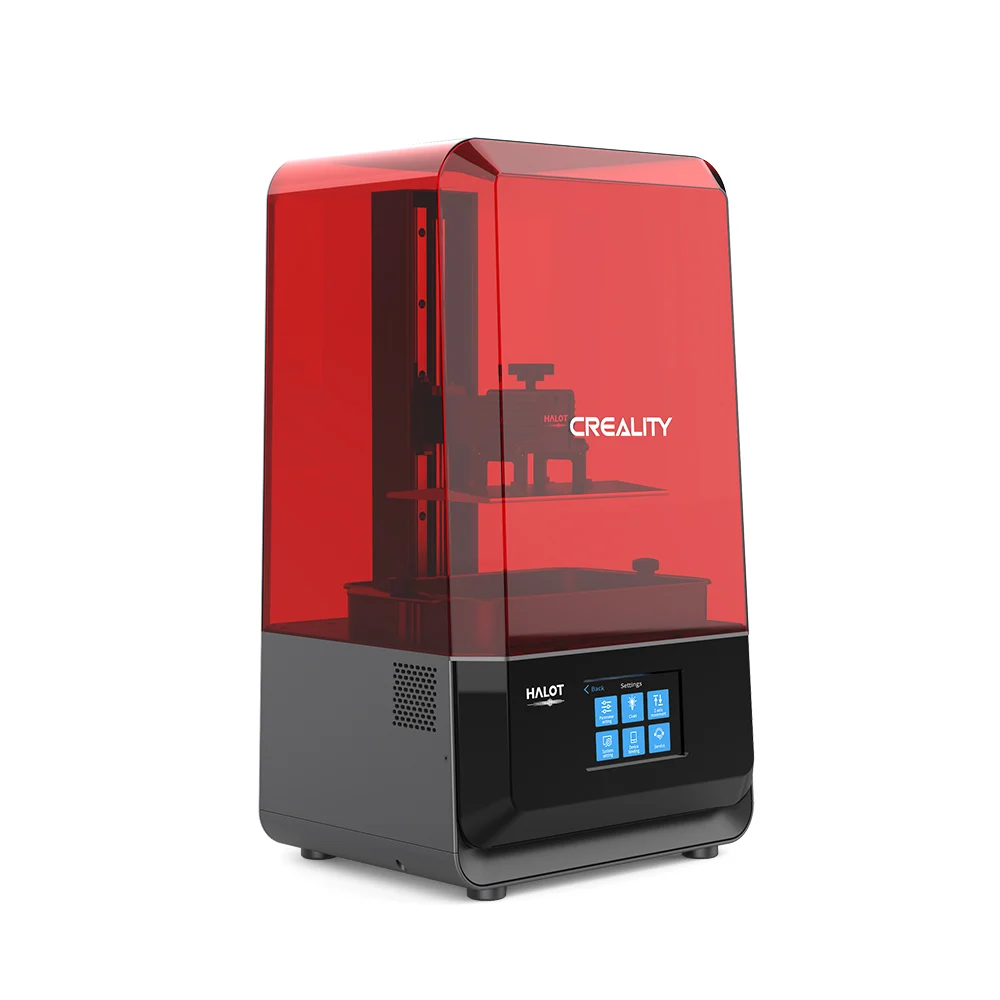Compare BIQU B1 vs Halot Lite
Comparison between the best 3D printers
Choose the best 3D printer at the best price. The cheapest 3D printers are here.
Buy a 3D printer here with 3D Fila.
 |
 |
|
| Model | BIQU B1 |
Halot Lite |
| Printing Material | Filament | Resin |
| Buy Filament for BigTreeTech BIQU B1 | Buy Resin forCreality 3D Halot Lite | |
| Estimated price | $269,00 | $400,00 |
| Manufacturer | BigTreeTech | Creality 3D |
| Release Year | 2020 | 2021 |
| Print Volume [mm] | 235x235x270 | 192x120x200 |
| Printer Size [mm] | 412x402x492 | 330x301x572 |
| Weight [kg] | 8,00 | 10,6 |
| Power Loss Recovery | YES | NO |
| Maximum Resolution [mm] | 0,1 | 0,01 |
| Processor | 32 Bits BTT SKR V 1.4 | |
| Display | Touchscreen TFT 3,5'' | Display touchscreen 5'' |
| Power Supply | 24V / 360W | |
| Connectivity | SD / USB | SD / USB |
| Operating systems | Windows, Mac, Linux | Windows, Mac, Linux |
| Date of registration in the system | 2021-04-14 | 2022-11-04 |
| Release date | 2020 | 2021 |
| Extra features | The BIQU B1 is an advanced 3D printer with a silent 32-bit BTT SKR V1.4 motherboard and ARM Cortex-M3 CPU, offering DIY interfaces (I2C, SPI, WiFi) and dual Z-axis. Its dual BTT B1 TFT35 V3.0 operating system allows real-time monitoring and multiple printing modes, including G-code visualization effects. It stands out for its BIQU SSS (Super Spring Steel), ensuring easy model adhesion and simplified removal, with the possibility of using it on both sides. It includes a filament sensor, automatically pausing printing in case of filament breakage. The multicolored RGB lights integrated into the hotend allow you to view the printing status even at night. Additional notes include the need for a BIQU-specific Type-C cable and extra interfaces for smart filament sensor and BL Touch. | Crealitys Halot Lite printer stands out in the mid-size resin 3D printing segment, with a build volume of 192 x 120 x 200 mm and 50 micron resolution. It offers a monochrome LCD for fast and durable printing, and an upgraded light source that ensures over 80% uniformity across the print bed. It includes Wi-Fi connectivity for remote control and updates, an ARM Cortex CPU for efficient performance, and is compatible with Halot Box and Lychee slicing software. It also has an activated carbon filter to reduce odors. |
| Support for multiple colors and materials (AMS and CFS) | NO | NO |
Notes * |
||
| Cost-benefit | 6 / 10 | 8 / 10 |
| Hardware | 2 / 10 | 1.2 / 10 |
| Tela | . | . |
| Print volume | 3 / 10 | 3 / 10 |
| Performance | 0 / 10 | 9 / 10 |
Conclusion |
| In comparing the BIQU B1 and Halot Lite 3D printers, several key factors highlight their strengths and weaknesses, guiding potential buyers towards a more informed decision. The BIQU B1 emerges as a robust choice for those seeking affordability without sacrificing essential features. Priced lower, it offers a larger print volume and a multitude of innovative functionalities, such as power loss recovery, a silent motherboard, and effective model adhesion with its Super Spring Steel plate. Its extensive DIY interfaces enhance flexibility and performance, making it ideal for hobbyists who value versatility and a hands-on approach. Conversely, the Halot Lite, while more expensive, provides exceptional performance in resin printing. Featuring a higher maximum resolution and uniform light distribution, it is tailored for precise and detailed prints. The inclusion of Wi-Fi connectivity facilitates remote operation, and the integrated carbon filter adds a layer of user comfort by mitigating odors during printing. In conclusion, the choice between the BIQU B1 and Halot Lite largely depends on the user's specific needs and budgetary constraints. For those prioritizing print volume and versatility at a lower cost, the BIQU B1 stands out as the best value option. However, for users focused on high-resolution resin prints and advanced features, the Halot Lite justifies its higher price point with superior performance. Thus, potential buyers should weigh their printing goals against price and functionality to select the most suitable 3D printer for their needs. |

